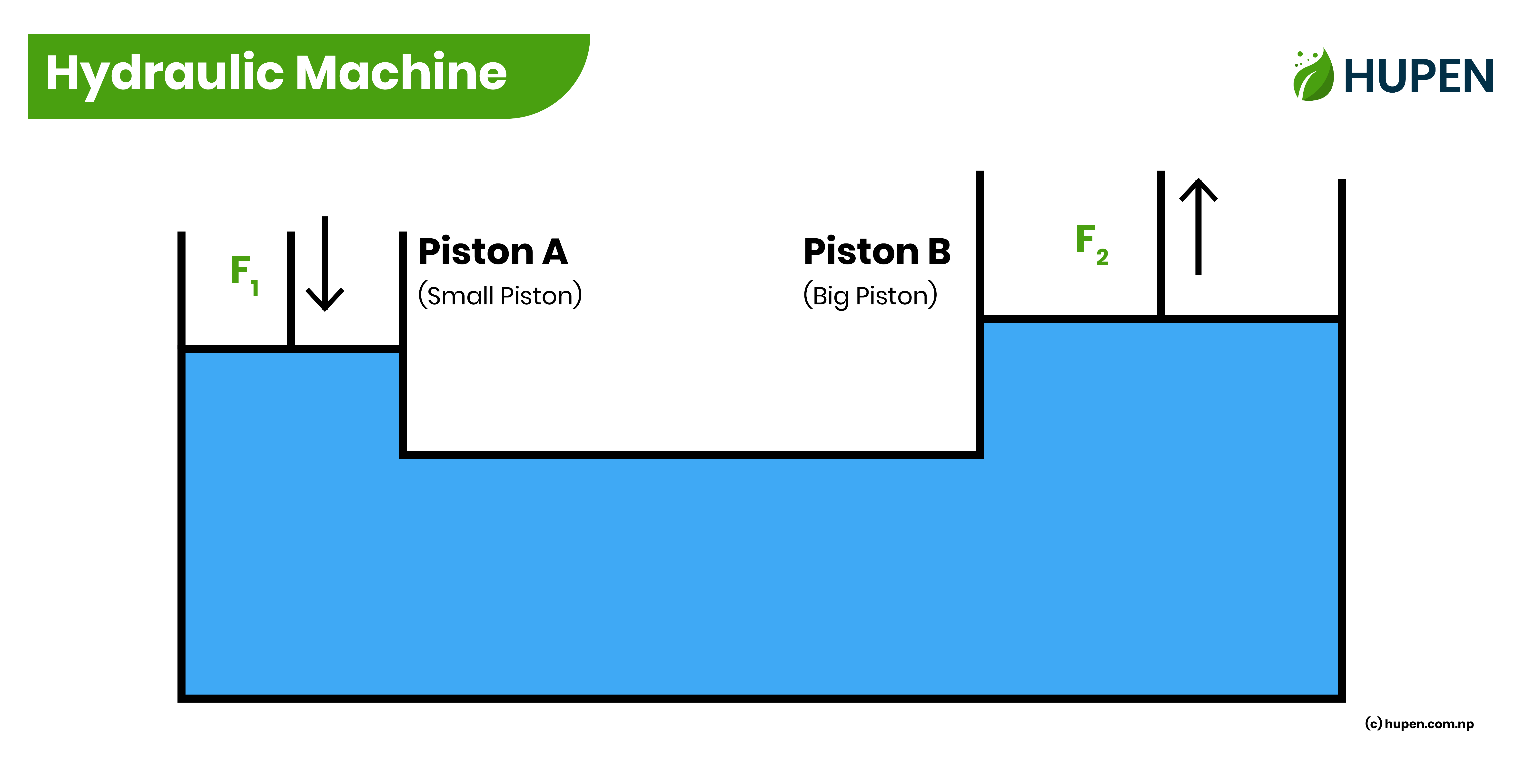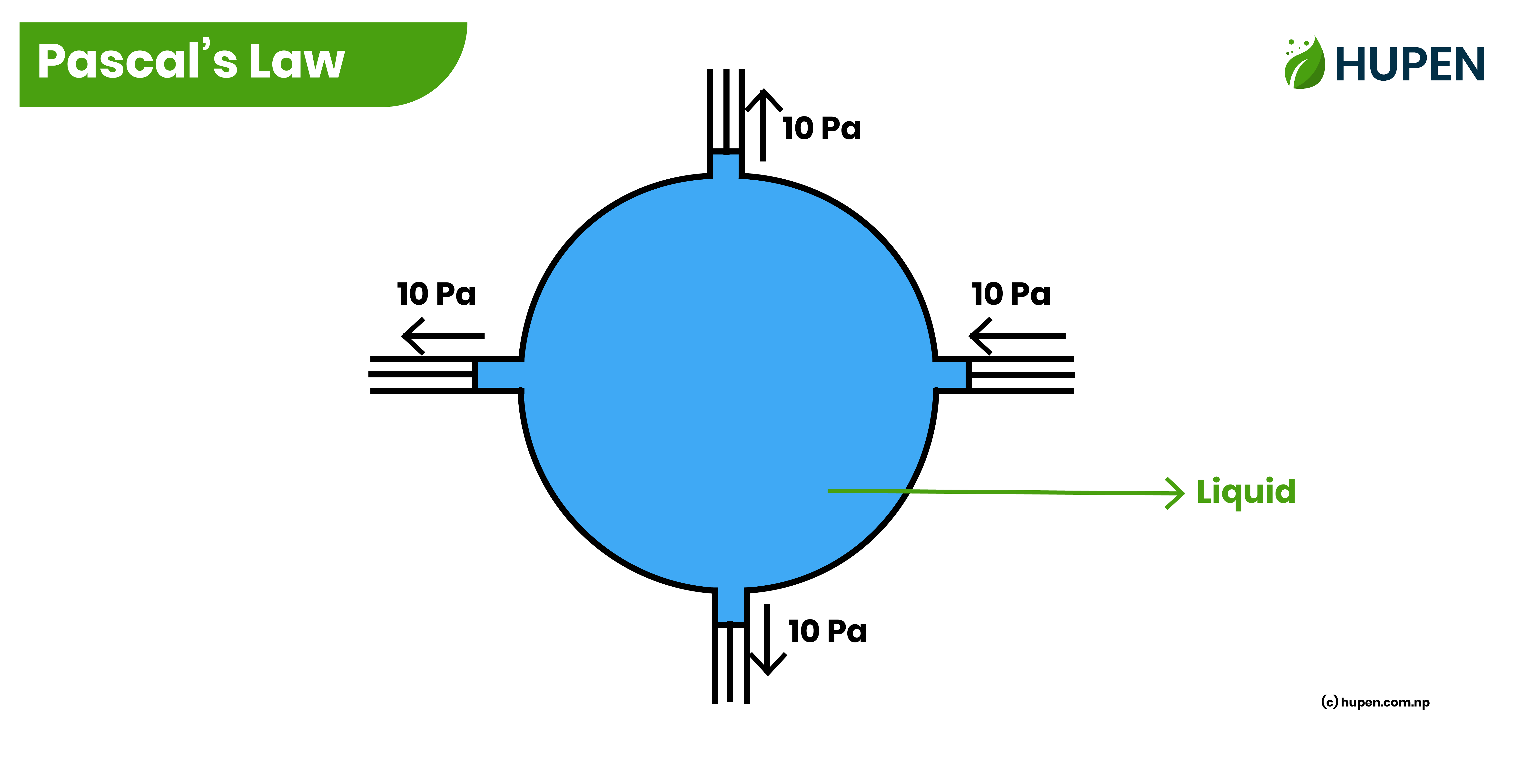Introduction to Pascal’s Law
Pascal's Law is a fundamental principle in fluid mechanics and hydraulics. It was formulated by the French mathematician and physicist Blaise Pascal in the 17th century. It explains how pressure is transmitted uniformly throughout an enclosed fluid, and it has numerous practical applications, particularly in hydraulic systems.
What’s Pascal’s Law?
Pascal’s law states that
“The pressure is equally transmitted perpendicularly to all sides as pressure is applied at a place on a liquid contained in a closed container.”
Applications Of Pascal’s Law
Pascal’s law is used in different Hydraulic machines like Hydraulic Press, Hydraulic Brake, Hydraulic Lift etc.
Hydraulic Machines
The working principle of Hydraulic machines,
“A small force applied on a smaller piston is transmitted to produce a large force on the bigger piston.“

Let us consider F1 as the force on a small piston with cross-sectional area A1 and F2 as the force produced on a big piston with cross-sectional area A2. Then,
According to Pascal’s Law,
Pressure on small Piston = Pressure on Big Piston
In equation (i) the factor \((\frac{A_2}{A_1})\) is always greater than one because the cross-sectional area of big piston is always greater than the cross-sectional area of the small piston.
1. Hydraulic Press
A hydraulic press is a machine that uses Pascal's Law to generate a powerful force. It consists of two cylinders, one small and one large, connected by a pipe filled with hydraulic fluid. When force is applied to the small cylinder, it's magnified in the larger cylinder, making it useful for tasks like crushing, molding, or lifting heavy objects.
2. Hydraulic Brake
A hydraulic brake is a system used in vehicles to stop them safely. It operates using Pascal's Law. When you press the brake pedal, it sends hydraulic fluid through pipes to squeeze brake pads against the wheels, creating friction that slows the vehicle down. Hydraulic brakes are reliable and effective in modern automobiles.
3. Hydraulic Lift
A hydraulic lift is a device that moves objects, like cars or elevators, up and down. It relies on Pascal's Law. When you pump a hydraulic fluid into a small cylinder, it pushes a larger one, lifting the load. Hydraulic lifts are common in garages, factories, and buildings for easy vertical movement.
Frequently Asked Questions – FAQs
Q1. Write the statement of Pascal’s Law.
- It states that “The pressure is equally transmitted perpendicularly to all sides as pressure is applied at a place on a liquid contained in a closed container.”
Q2. What is the Hydraulic Machine?
- Hydraulic machine is a device which contains liquids like oil or water and works under the principle of Pascal’s Law.


